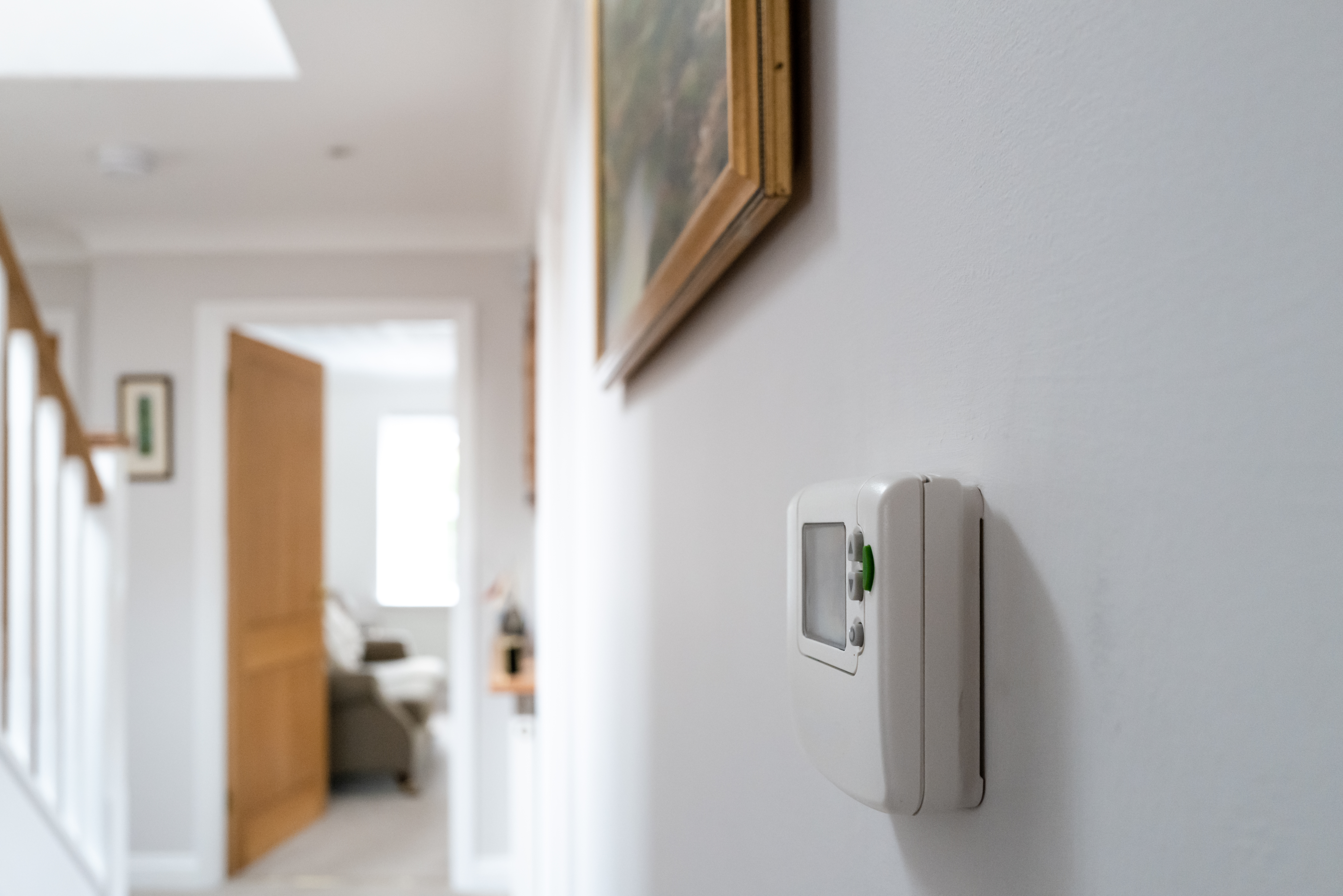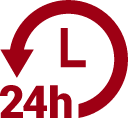The EPA recommends a programmable thermostat for most American households. Just lowering or raising your thermostat by 7 degrees Fahrenheit for eight hours a day can make a 10% difference in energy costs. Most homeowners who currently have a manual thermostat can save over 14 hours or more. With that in mind, let’s explore how you can save with a programmable thermostat.
Programmable Thermostats
A programmable thermostat is designed to adjust temperature and potentially other settings without manual interaction. Although these terms have largely faded from use, they have also been called clock thermostats and setback thermostats. Most modern programmable thermostats are digital thermostats. Older clock thermostats typically had four hot and cold settings at most. Modern digital programmable thermostats can have a wide range of settings that are applied conditionally.
Programmable vs. Smart Thermostats
The terms programmable and smart are often used interchangeably depending on the make and model. Rather than relying on the product label, you need to vet the thermostat to ensure it has the features you want. Technically, a smart thermostat is a programmable thermostat, but not all programmable thermostats are smart thermostats. Smart thermostats are capable of connecting to your network via wifi to communicate with other devices, such as your phone. Smart thermostats also frequently have learning capabilities to better meet your heating and cooling needs.
Thermostat Operation
Typically, each degree of raised or lowered temperature translates to 1% of energy savings. If you lower your temperature from 70 to 60 degrees for eight hours a day during the heating season, you should be able to reduce your costs by 10%. Program your thermostat according to your activity levels and work status to maximize your savings. You can even have your schedule set one way for the workweek and another way for your days off. Program seasonal settings as well to get the most out of this handy device.
Avoid Large Swings and Frequent Changes
Most homeowners will have their programmable thermostats adjust the temperature within a 10-degree range about four times a day, which is fine. If a larger transition is needed, space 10-degree changes out for at least 30 minutes. You should also avoid more than four changes a day. A different setting for every hour, for instance, will likely result in reduced energy performance overall.
Compatibility
Most programmable thermostats on the market are suitable for all gas and electric furnaces. This is not the case with heat pumps, electric resistance heating, boilers, and radiant floor heating. At one point, the EPA advised against programmable thermostats for these systems entirely. Today, thermostats that support these systems are available. Consult with your HVAC technician to ensure that you are purchasing an appropriate thermostat.
Programming Your Thermostat to Save
Start by planning a schedule based on your household. Most households will want to account for four core periods. These are the periods when you’re asleep, the morning, the time when you are at work and school, and the afternoon and evening when the family is occupying the living space.
Determine your comfortable thermostat setting. The EPA recommendation for energy efficiency is 78 degrees Fahrenheit in summer and 68 degrees in winter. Many people prefer a setting between 72 and 76 degrees in summer. In winter, as low as 55 degrees is safe for adults. If you have children, check with your doctor. Typically, 68 degrees is the minimum recommendation.
Whatever your ideal temperature, you should ensure your thermostat is set to that number during the times when you are home and awake. When you are away or sleeping, you can safely set the thermostat 10 to 15 degrees higher or lower than your ideal temperature. You can also safely keep your home at 88 degrees during the cooling season when you are away as long as you don’t have pets.
The system will need at least 15 minutes to adjust. Some thermostats account for this automatically. If yours does not, you can include it in your settings. For instance, if you wake at 6 a.m. and return home at 5 p.m., set the system to adjust at 5:45 a.m. and 4:45 p.m., respectively. As much as a 30-minute lead-in when returning home is fine. Many sleep experts recommend adjusting your sleep temperature as much as 60 minutes in advance of actually going to sleep.
Hold and Vacation Settings
Most programmable thermostats have a hold feature. If you have a day off, set the system to hold and set your desired temperature without affecting the programming. Likewise, the vacation setting allows you to maintain a consistent safe temperature while you’re away for an extended period.
Cycle Times
Regarding HVAC, cycle refers to the length of the period in which your system runs. Not all programmable thermostats support cycle time adjustment. Those that do will usually allow for temperature ranges rather than a precise temperature setting. This allows the system to get in the ballpark of what you want but in the most efficient manner possible. If you do opt for a unit with cycle adjustment, be sure to have it calibrated by a professional HVAC technician.
Humidity Control
Many modern programmable thermostats have humidity control. This feature makes it easy to adjust relative humidity if you have a whole-home dehumidifier and/or humidifier. Maintaining an optimal RH allows you to be comfortable at a lower temperature in winter and a higher temperature in summer. According to the EPA, this can reduce your energy costs by an additional 3% per year.
Energy Usage Reporting
Many programmable thermostats provide energy reports. Some thermostats will even email the report to you monthly. These reports will show you where you are spending the most money. You can then make further adjustments based on those reports to save even more.
Learning Thermostats
Not all smart thermostats have machine-learning capabilities, but it’s becoming more common. This feature allows your system to track and assess your energy usage. It can then make recommendations to adjust your schedule to improve energy efficiency.
Remote Access
Remote access and control via smartphone apps are great features to consider. Your thermostat can push alerts to you. You can also make adjustments on the fly. Have to work late tonight? Delay your schedule by a couple of hours to save a bit more.
Energy Star Certification
Energy Star is a government-backed program through which devices are certified for energy efficiency by the EPA. A programmable thermostat with Energy Star certification is recommended. Purchasing an Energy Star thermostat gives you confidence that the unit provides energy savings within the standards set forth by the EPA. You may also be eligible for a tax credit. Many homeowners will be able to offset their investment in a programmable thermostat partially or even fully.
Your Local Thermostat Experts in Cheshire
If you’d like a programmable thermostat installed in your home, F.F. Hitchcock Plumbing, Heating & Cooling can help. Our technicians also install, maintain, and repair all manner of heating and cooling equipment. We specialize in indoor air quality systems. Our team performs energy audits. We install and fill propane and oil tanks. You can also count on our expert plumbers for drain cleaning, water heater installation, water treatment, and water and gas line installation and repair. Call us today or contact us online to schedule an appointment or with any questions about the services and products we offer.







